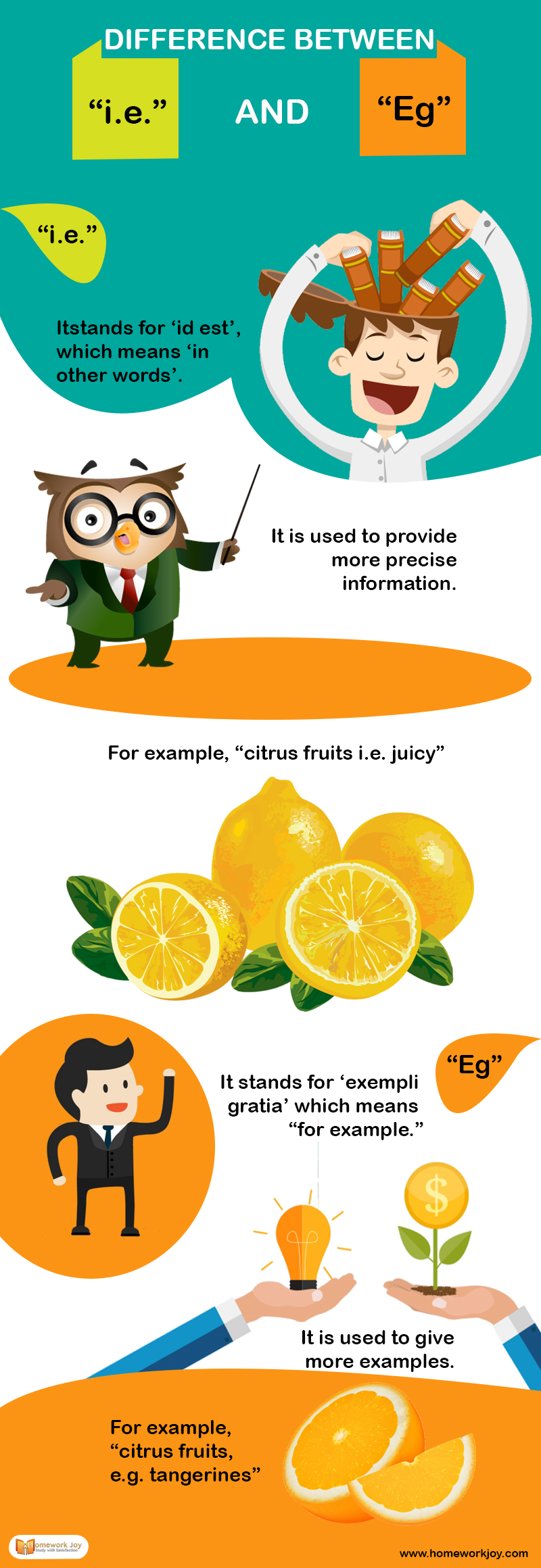Do you know the distinction between, i.e., and, e.g.? If not, no need to stress. A great many people accept these shortened forms are compatible – yet they represent two distinct articulations. The abbreviations are in trend thanks to the numerous typing required to do these days. These abbreviations do reading and writing more comfortable and faster. The confusion only arises when we forget what acronyms stand for.
Both, for example, are shortened forms for Latin articulations. While their use is comparable, it is utilized contradistinction in sentences.
Given below are the differences between, i.e., and, e.g.-
I.E.
- I.e. stands for ‘id est.’, which means ‘in other words’
- It is used to provide more precise information
- For example, “citrus fruits, i.e., juicy “
E.g.
- It stands for `exempli gratia’ which means “for example”
- It is used to give more examples
- For example, “citrus fruits, e.g., tangerines”
Comparison chart
| Points of comparison | i.e | e.g |
| Meaning | Means, “ in other words.” | Means “for example” |
| Uses | To provide clarification | To provide example |
| Position | Placed in the middle of the sentence | Placed at the end of the sentence |
| Example | One should be disciplined in life, i.e., follow his/her routine | There are a variety of plants, e.g., rosewood, mahogany, peepal, etc |
Ways to remember the difference
An easy way to remember the difference between these abbreviations is to connect the first letter of the word with its meaning. Since i is the beginning of the abbreviation, i.e., then its purpose would also start from its first letter, I, which means “in other words.” Similarly, e is the beginning of the abbreviation, e.g., then its meaning even starts from the letter e, which means “ Exempli.”
Things to keep in mind
- Try not to italicize, i.e., and, e.g., even if they are derived from Latin words because they’ve been used for so long, and they are considered to be part of the English language
- It would be best if you never spelled the abbreviations using their Latin words( “id est” and “exempli”)
- Use punctuation rules along with an abbreviation. Use a comma after the abbreviation in the American language
For example,
I love all kind of kinds of pizza, e.g., Margherita, veggie-loaded, non-vegetarian, etc
You should dress appropriately in the office, i.e., wear a saree or a suit pant
- Since you’ve seen in the example that after both the abbreviations coma is used
